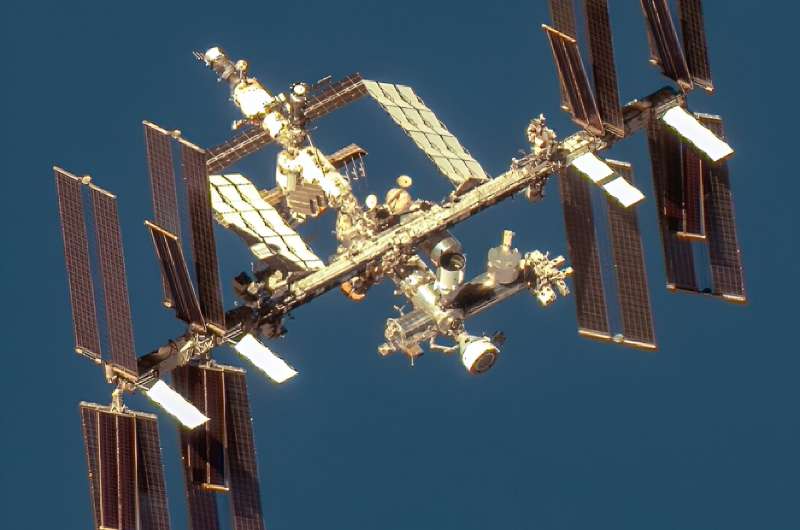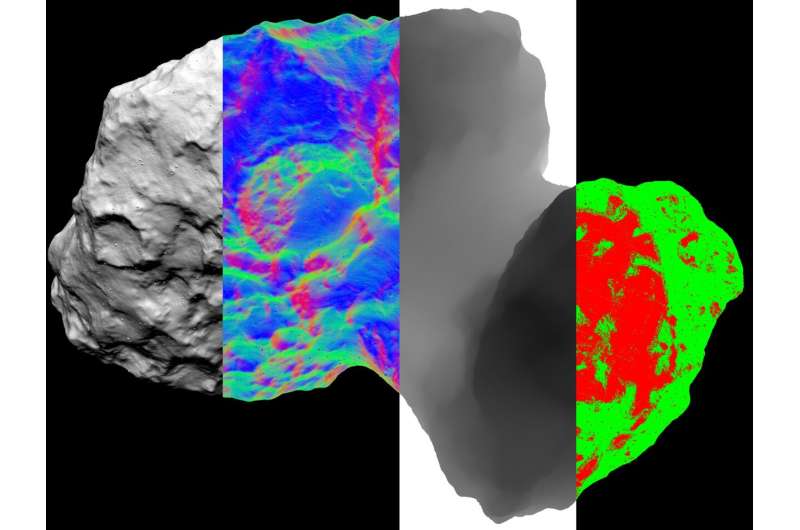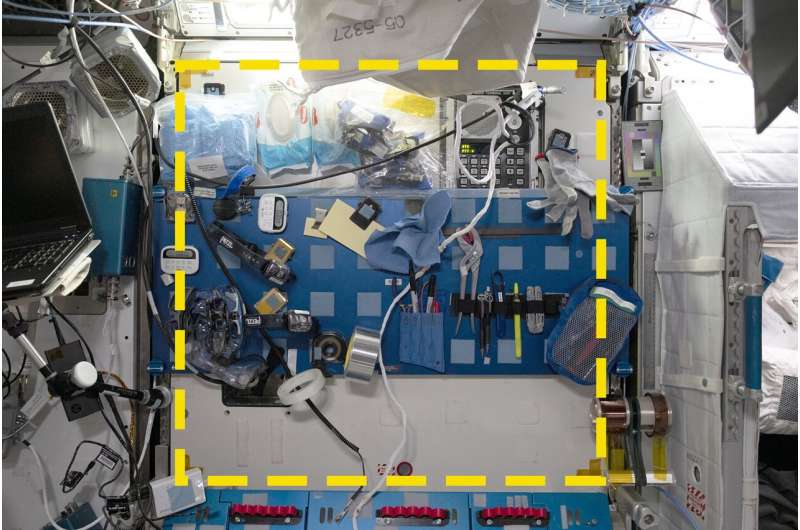China launches first satellites for Internet megaconstellation into space
Wednesday, 07 August 2024 21:38 China on Tuesday successfully launched a satellite group up into space with more on the way aimed at improving broadband services across the massive Asian nation.
The group of 18 satellites were launched at 2:42 p.m. local time from the Taiyuan Satellite Launch Center in northern China's Shanxi Province attached to a Long March 6A rocket for Shanghai Spacecom Satellite Technology, which
China on Tuesday successfully launched a satellite group up into space with more on the way aimed at improving broadband services across the massive Asian nation.
The group of 18 satellites were launched at 2:42 p.m. local time from the Taiyuan Satellite Launch Center in northern China's Shanxi Province attached to a Long March 6A rocket for Shanghai Spacecom Satellite Technology, which Early Sea Level Changes Influenced Evolution of Ancient Life, Study Shows
Wednesday, 07 August 2024 21:38 A newly developed timeline of early animal fossils reveals a link between sea levels, changes in marine oxygen, and the appearance of the earliest ancestors of present-day animals.
The study reveals clues into the forces that drove the evolution of the earliest organisms, from which all major animal groups descended.
A team from the University of Edinburgh studied a compilation of ro
A newly developed timeline of early animal fossils reveals a link between sea levels, changes in marine oxygen, and the appearance of the earliest ancestors of present-day animals.
The study reveals clues into the forces that drove the evolution of the earliest organisms, from which all major animal groups descended.
A team from the University of Edinburgh studied a compilation of ro New Fossil Discovery Sheds Light on Mollusc Evolution
Wednesday, 07 August 2024 21:38 A team of researchers, including scientists from the University of Oxford, has uncovered a new species of mollusc dating back 500 million years. Named Shishania aculeata, this fossil reveals that the earliest molluscs were flat, shell-less slugs protected by spiny armor. These findings are published in the journal Science.
The discovery comes from well-preserved fossils found in eastern Yu
A team of researchers, including scientists from the University of Oxford, has uncovered a new species of mollusc dating back 500 million years. Named Shishania aculeata, this fossil reveals that the earliest molluscs were flat, shell-less slugs protected by spiny armor. These findings are published in the journal Science.
The discovery comes from well-preserved fossils found in eastern Yu Seawater barium removal enhanced marine habitability for Cambrian animals
Wednesday, 07 August 2024 21:38 This study, led by Dr. Wei Wei, PhD student Lin-Hui Dong, and Prof. Fang Huang at the University of Science and Technology of China, investigates the removal of excess barium and sulfide from seawater and its impact on marine habitability during the Cambrian Explosion.
Lin-Hui Dong analyzed excess barium contents (Baexcess) and isotope compositions (d138Baexcess) at the State Key Laborator
This study, led by Dr. Wei Wei, PhD student Lin-Hui Dong, and Prof. Fang Huang at the University of Science and Technology of China, investigates the removal of excess barium and sulfide from seawater and its impact on marine habitability during the Cambrian Explosion.
Lin-Hui Dong analyzed excess barium contents (Baexcess) and isotope compositions (d138Baexcess) at the State Key Laborator Detecting nitrogen dioxide emissions from power plants using Sentinel-2 satellites
Wednesday, 07 August 2024 21:38 Atmospheric nitrogen dioxide (NO2) is a hazardous pollutant with profound effects on air quality, climate, and the biosphere. While satellites have been mapping NO2 concentrations since the 1990s, their resolutions have generally been too coarse to identify individual sources such as power plants.
A recent study has made significant strides in air pollution monitoring by using imagery from
Atmospheric nitrogen dioxide (NO2) is a hazardous pollutant with profound effects on air quality, climate, and the biosphere. While satellites have been mapping NO2 concentrations since the 1990s, their resolutions have generally been too coarse to identify individual sources such as power plants.
A recent study has made significant strides in air pollution monitoring by using imagery from NASA considering returning Starliner astronauts on Crew Dragon
Wednesday, 07 August 2024 20:41

U.S. Army gears up for space warfare, drawing lessons from Ukraine
Wednesday, 07 August 2024 19:33

NASA weighs SpaceX rescue for stranded Boeing Starliner crew
Wednesday, 07 August 2024 18:57
What was meant to be a weeklong trip to the International Space Station (ISS) for the first NASA astronauts to fly with Boeing could extend to eight months, with the agency considering bringing them home on a SpaceX spaceship.
A final decision on whether to persist with Boeing's troubled Starliner—which experienced worrying propulsion issues as it flew up to the orbital platform in June—is expected later this month, officials said Wednesday in a call with reporters.
Detailed planning is already underway with Boeing's rival SpaceX, owned by Elon Musk, to potentially launch their scheduled Crew-9 mission on September 24 with just two astronauts rather than the usual four.
Optical navigation tech could streamline planetary exploration
Wednesday, 07 August 2024 18:55
In a dim, barren landscape like the surface of the moon, it can be easy to get lost. With few discernable landmarks to navigate with the naked eye, astronauts and rovers must rely on other means to plot a course.
As NASA pursues its moon to Mars missions, encompassing exploration of the lunar surface and the first steps on the Red Planet, finding novel and efficient ways of navigating these new terrains will be essential. That's where optical navigation comes in—a technology that helps map out new areas using sensor data.
NASA's Goddard Space Flight Center in Greenbelt, Maryland, is a leading developer of optical navigation technology. For example, GIANT (the Goddard Image Analysis and Navigation Tool) helped guide the OSIRIS-REx mission to a safe sample collection at asteroid Bennu by generating 3D maps of the surface and calculating precise distances to targets.
Now, three research teams at Goddard are pushing optical navigation technology even further.
Spanish defense contractor buys small satellite mission specialist Deimos
Wednesday, 07 August 2024 18:42

Study finds discrepancies between intended and actual use of certain areas aboard the International Space Station
Wednesday, 07 August 2024 17:00
An archaeological strategy adapted for space used daily photos to reveal how astronauts actually use areas aboard the International Space Station—and how this differs from intended uses.
PLD Space to start building French Guiana launch facilities next month
Wednesday, 07 August 2024 16:35

Long-term moon mission safety depends on sturdy infrastructure
Wednesday, 07 August 2024 14:43






